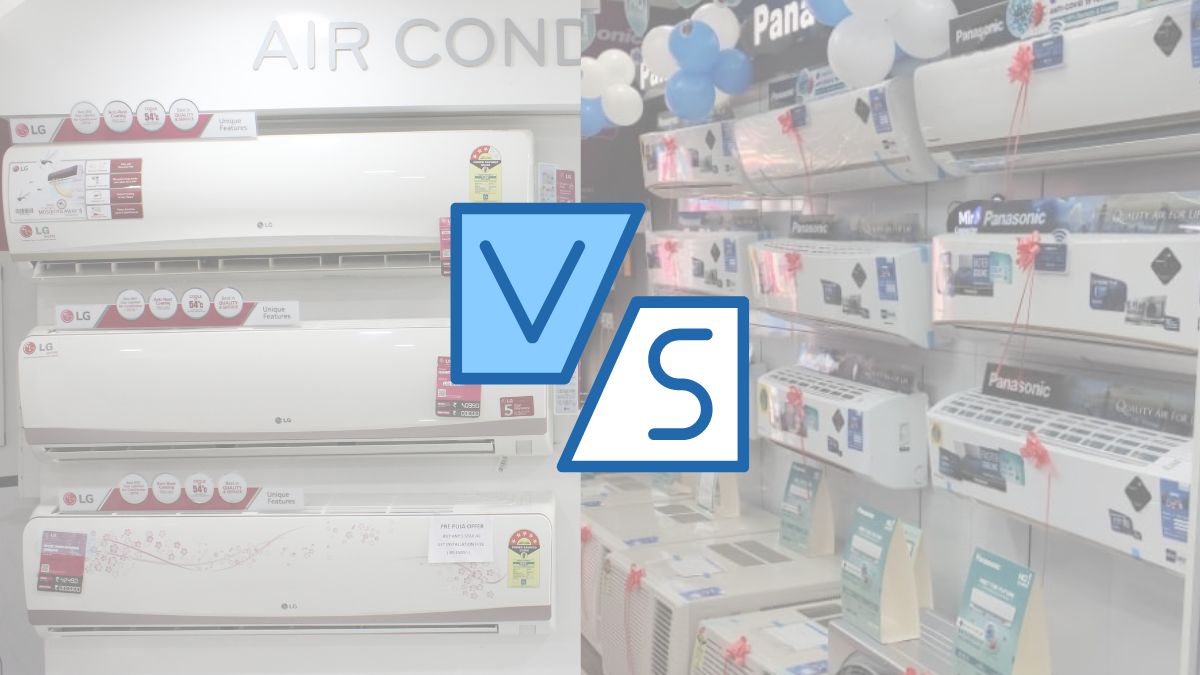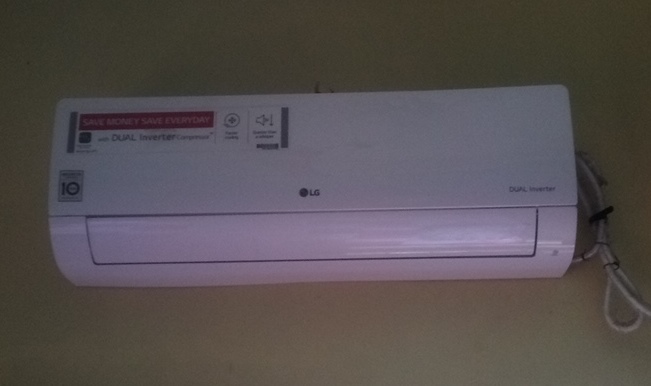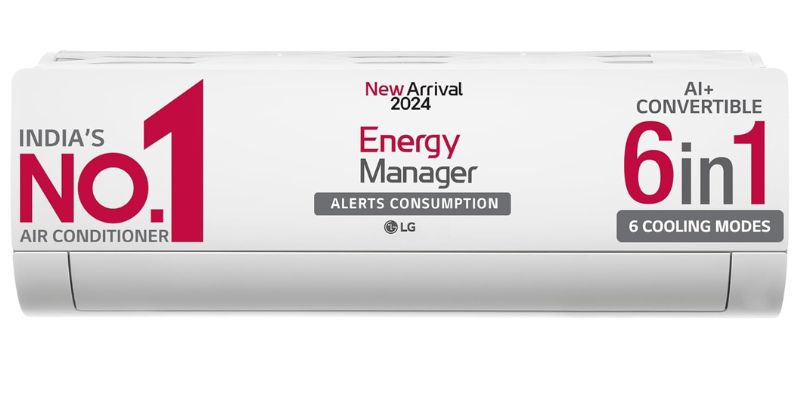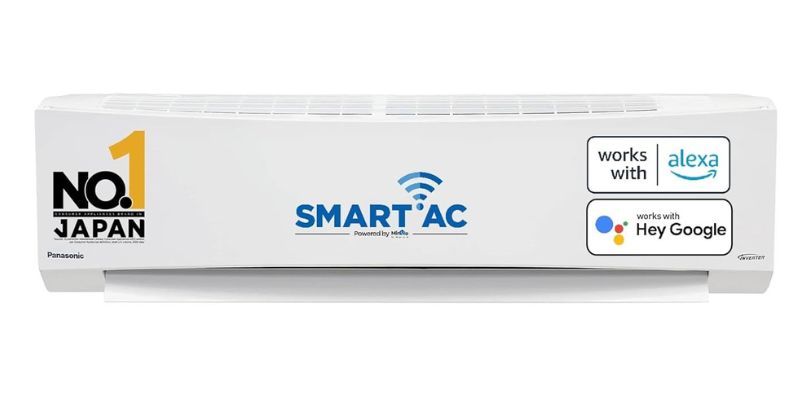
I have seen those two top contenders in the 1.5 ton 5 star AC category are the LG and the Panasonic 1.5 Ton 5 Star Inverter AC. I have taken a week to test them in 150 Square feet room and found some similarities and differences between these ACs. The main differences between the LG and Panasonic 1.5 Ton 5 Star Inverter ACs lie in connectivity, noise, and voltage stabilization. Tests show the Panasonic operates more quietly, especially on lower fan speeds. Its noise levels are 2-3 dB lower across the speed range. LG wins on connectivity and lower annual energy consumption.
Here is the comparison table of LG Vs Panasonic AC 1.5 Ton 5 Star 2024 model
Auto self Diagnose
Anti-virus protection and dehumidifier feature
Long warranty
Low gas detection feature
4-way swing
Quiet operation with 31 decibels noise level
Voice control with Alexa and Hey Google
6 in 1 Convertible mode
Higher price around ₹47,000
Fast Cooling
Auto self Diagnose
PM 0.1 filter for clean and dust-free air
Voice control with Alexa and Hey Google
7 in 1 Convertible mode
Good air circulation
Hidden display
Large in size
Similarities between LG and Panasonic 1.5 Ton 5 Star AC’s
Both the model have some similarities :
- Inverter compressor technology for variable speed cooling
- 100% copper condenser coil for better heat exchange
- Can cool up to an ambient temperature of 52°C
- Comes with a remote control for operating the AC
- Have basic air filters
- Both have Wifi with Google home and Amazon Alexa support.
- Self-diagnosis feature to detect issues
- Both have inbult stabilizer, offer stabilizer free operation up to 120V~290V
Differences between LG and Panasonic 1.5 Ton inverter split AC’s
When it comes to actual cooling output, both the LG and Panasonic 1.5 ton ACs perform very similarly:
01. Energy Efficiency Comparison
Both the LG and Panasonic 1.5 ton split ACs have good energy efficiency with 5 star BEE ratings. However, the LG model edges out the Panasonic when it comes to certain metrics:
| Metric | LG AC | Panasonic AC |
| ISEER Rating | 5.2 | 5.1 |
| Annual Electricity Consumption | 744.54 units | 774.19 units |
As you can see from the table, the LG AC has a higher Indian Seasonal Energy Efficiency Ratio (ISEER) of 5.2 compared to 5.1 for the Panasonic. The higher the ISEER, the more energy efficient the AC is.
LG claims their 1.5 ton AC will consume only 744.54 units of electricity annually compared to 774.19 units for the Panasonic, which is found correct. Over years of usage, those extra 29.65 units saved annually with the LG AC will start to add up.
Energy efficiency metrics specifically, the LG 1.5 Ton 5 Star Inverter AC is the winner. It has the edge with a higher ISEER rating and lower estimated annual electricity consumption.
02. Cooling Performance Comparison
Core function of cooling- both LG and Panasonic 1.5 ton ACs deliver excellent performance. But slight differences give each model a marginal edge in certain areas:
| Spec | LG AC | Panasonic AC |
| Cooling Capacity | 5800 Watts | 5100 Watts |
| Airflow Rate | 653 CFM | 636 CFM |
| Ambient Temp Handling | 52°C | 52°C |
As you can see from the table, the LG AC has a higher maximum cooling capacity of 5800 Watts versus 5100 Watts in the Panasonic. This allows the LG unit to remove heat faster when operating at full blast.
Another good thing I have found in testing, Panasonic AC has a higher airflow circulation rate of 636 CFM compared to 653 CFM in the LG model. Panasonic was able to circulate air more quickly throughout the room.
Both ACs are capable of handling high temperatures up to 52°C, good for this May to August summer.
They are very close matchup when it comes to cooling capabilities. The higher airflow rate gives the Panasonic AC a slight edge in circulating cooled air effectively. But the LG counters with higher maximum cooling capacity.
I’d have to declare this comparison a draw – the Panasonic and LG ACs are both excellent, comparable options when it comes to cooling power and performance for a medium-sized room.
03. Noise Level Comparison
During testing I have found, Panasonic 1.5 Ton AC operates more quietly across all fan speeds compared to the LG model:
| Noise Level (db) | Panasonic AC | LG AC |
| High Fan Speed | 46 db | 45 db |
| Medium Fan Speed | 42 db | 39 db |
| Low Fan Speed | 38 db | 31 db |
As you can see from the data, the Panasonic AC emits lower decibel levels than the LG on high, medium and low fan speeds. The difference is most noticeable on low fan – the Panasonic registers only 38 db versus 31 db on the LG model, it is much quieter.
The lower decibel levels mean the Panasonic AC produces less audible noise when operating. For consumers who value peace and quiet, especially in bedrooms, the Panasonic is the winner when it comes to noise levels.
Of course, both ACs allow you to lower the fan speed to reduce noise. But Panasonic’s optimally designed compressor and quieter airflow translate to noticeably lower noise levels at max performance.
04. Maintenance Comparison
Good thing I have found, The LG AC has a removable dust filter that needs periodic cleaning to remove accumulated dirt and debris. Panasonic’s filter is integrated within the unit and self-cleans using the Crystal Clean technology.
I have found, the Panasonic AC is the intuitive auto-diagnosis feature that can detect problems early and alert users in their phone app. The LG Smart Diagnosis system also monitors for issues but not be as advanced.
The LG does offer handy low gas detection to notify users if refrigerant levels are getting low. Both brands have self-cleaning features like Auto Clean on the LG and Crystal Clean on the Panasonic to inhibit mold growth.
LG require more frequent filter cleans, but Panasonic doesn’t require frequent filter clean. I’d call maintenance a draw between these two quality air conditioners.
Which AC is Better for a 150 sq ft Room?
Cooling a medium-sized room of 150 sq ft, both the LG and Panasonic 1.5 ton ACs are suitable options. But how do they compare for effectively and efficiently cooling this size space?

With 1.5 ton capacity, these ACs are rated to cool rooms between 121-180 sq ft in size. A 150 sq ft bedroom or living room falls comfortably within the optimal size range for these units.
Cooling power, the LG AC edges out slightly with its higher 5800 Watts maximum cooling capacity over the Panasonic’s 5100 Watts. But both can effectively bring down temperatures in a 150 sq ft room.

The Panasonic does have a airflow circulation advantage with 636 CFM over the LG’s 653 CFM. This allows it to circulate the cool air faster throughout the 150 sq ft space.
In energy efficiency test, I have found the LG is the winner with its higher ISEER rating of 5.2 versus 5.1 for the Panasonic.
For a 150 sq ft medium-sized room, I would give a marginal win to the LG 1.5 Ton AC.
Which is Better: LG vs Panasonic 1.5 Ton AC?
When choosing between the LG and Panasonic 1.5 ton 5 star split ACs, here are some key factors to consider:
4 Reasons to Buy the LG AC:
- Slightly higher energy efficiency (ISEER 5.2)
- Smart home connectivity via WiFi and app
- LED display and specialized cooling modes
- Stabilizer-free operation
4 Reasons to Buy the Panasonic AC:
- Lower noise levels for quieter operation
- PM 2.5 filter cleans the air effectively
- Stabilizer-free operation within wide voltage range
- Slightly higher airflow circulation
The Verdict – depend on user preferences
Both LG and Panasonic 1.5 Ton 5 Star Inverter split ACs, it’s a very close matchup. Both are excellent choices for cooling a medium-sized room.
The LG AC edges out when it comes to:
- Energy efficiency – Higher ISEER rating of 5.2 vs 5.1 on Panasonic
- Smart features – Offers WiFi/app connectivity
- Cooling capacity – 5800W max capacity vs 5100W on Panasonic
- Warranty – 10 years on compressor vs 5 years from Panasonic
However, the Panasonic AC has advantages in:
- Noise levels – Operates more quietly, especially on lower fan speeds
- Air circulation – Moves air faster at 636 CFM vs 653 CFM in the LG
- Stabilizer-free operation – Can stabilize voltage fluctuations without external stabilizer
The LG is the winner if you want smarter AC operation, maximum energy savings, and standard cooling.
But the Panasonic takes the crown if you value quieter performance, fast cooling, air purity, and stabilizer-free convenience.
Also read,









